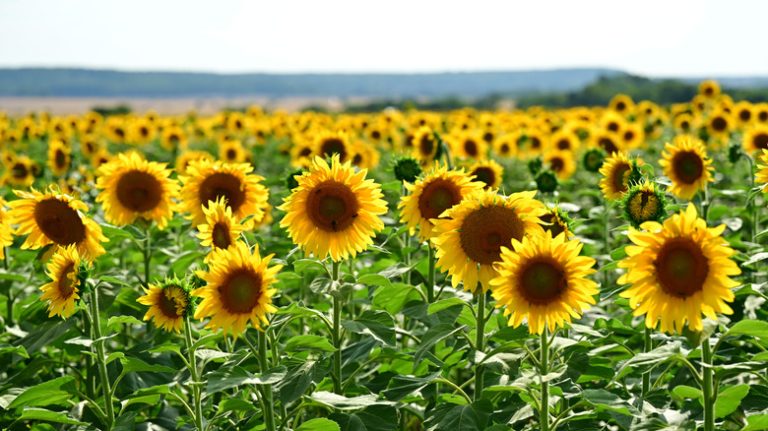When it comes to rose diseases, prevention is key. Roses are favored for their beautiful blooms and fragrant scent, but they are also susceptible to various diseases that can damage and ultimately kill the plant if left untreated.
One common rose disease is black spot, which is caused by a fungus. It typically appears as abaxial yellowing or black spots on the leaves, which can spread and cause defoliation. To prevent black spot, it is important to keep the rose plant pruned and free of debris, as well as avoid overhead watering. Regularly spraying the plant with a fungicide can also help control black spot.
Another type of rose disease is powdery mildew, which is characterized by a white, powdery growth on the leaves and stems. Powdery mildew is favored by dry conditions and can be prevented by maintaining good airflow around the plant and avoiding overhead watering. If powdery mildew is present, it can be controlled by applying a fungicide or using integrated pest management techniques, such as introducing natural predators.
Rose rust is a disease caused by a fungus that appears as orange-red spots on the leaves and stems. It is commonly found in wet, humid conditions and can be prevented by ensuring proper spacing between plants and avoiding overhead watering. If rose rust is present, infected leaves and stems should be promptly pruned and destroyed to prevent the spread of the disease.
It is important to be vigilant in preventing and controlling rose diseases, as they can quickly destroy a once thriving rose garden. Regularly inspecting plants for any signs of disease, practicing good sanitation techniques, and properly disposing of infected materials are all steps that should be taken to keep roses healthy and disease-free.
In conclusion, preventing rose diseases is essential for maintaining the health and beauty of your roses. By implementing proper gardening practices and taking steps to control and eliminate diseases at the first sign, you can enjoy a vibrant and flourishing rose garden for many seasons to come!
Rose Diseases
Rose diseases are common issues among rose growers. They can contribute to the defoliation and weakening of the plants, ultimately affecting their overall health and appearance. It is important to be able to identify and treat these diseases in order to maintain disease-free and healthy roses.
One common rose disease is botrytis, also known as gray mold. This fungal disease is characterized by a powdery gray mold on the leaves, stems, and flowers of the plant. Botrytis thrives in moist conditions and can spread rapidly, causing significant damage to the plant. Fungicides can be used to prevent and treat botrytis, but it is also important to maintain good air circulation and keep the rose plants clean and dry to minimize the risk of infection.
Another common rose disease is black spot. This fungal disease is characterized by black or dark brown spots on the leaves. Over time, the infected leaves may yellow and drop off, leading to defoliation. Black spot can be prevented and controlled by applying fungicides and removing infected leaves and canes. Additionally, practicing good sanitation, such as cleaning up fallen leaves and debris, can help prevent the spread of the disease.
Rose rosette is a viral disease that can cause distorted growth and the formation of abnormal shoots, known as “witches’ brooms.” Infected roses may also exhibit red discoloration, excessive thorniness, and shortened internodes. Rose rosette is spread by a tiny mite, so it is important to control mite populations with insecticidal compounds and keep the rose garden clean and free of debris. There is no cure for rose rosette, so infected plants should be removed from the garden to prevent the spread of the disease.
Powdery mildew is another fungal disease that affects roses. It appears as a white or gray powder-like substance on the leaves, stems, and buds of the plants. Powdery mildew can be prevented by providing good air circulation and avoiding overhead watering. Fungicides can also be used to control the disease. Removing infected leaves and canes can help minimize the spread of powdery mildew.
To ensure healthy roses, it is important to take a proactive approach to disease prevention. This includes planting disease-resistant rose varieties, providing proper nutrition and care, and regularly inspecting the plants for any signs of disease. Prompt action should be taken if any issues are identified, such as removing infected parts of the plants or applying appropriate treatments.
By following these practices and implementing proper disease management strategies, rose growers can minimize the risk of diseases and enjoy beautiful, disease-free roses in their landscape.
| Disease | Characteristics |
|---|---|
| Botrytis | Gray mold, powdery gray mold on leaves, stems, and flowers |
| Black Spot | Black or dark brown spots on leaves, yellowing, defoliation |
| Rose Rosette | Distorted growth, witches’ brooms, red discoloration, excessive thorniness |
| Powdery Mildew | White or gray powder-like substance on leaves, stems, and buds |
It is important to regularly monitor the rose plants for any signs of these diseases. By practicing good sanitation, providing proper care, and promptly addressing any issues, rose growers can maintain healthy and disease-free roses in their garden.
7 Harmful Rose Bush Diseases and How To Cure and Prevent Them
Rose bushes are beautiful and can be a stunning addition to any garden. However, they are also susceptible to various diseases that can harm their health and beauty. In this article, we will discuss seven common rose bush diseases, their symptoms, and the best ways to cure and prevent them.
- Black Spot: This fungal disease appears as black spots on the leaves, which eventually turn yellow and drop off, leading to defoliation. To treat black spot, remove infected leaves, improve air circulation around the bush, and apply a fungicide.
- Powdery Mildew: Powdery mildew is a fungus that forms a white powdery coating on the leaves, stems, and buds. To cure and prevent powdery mildew, prune the affected areas, avoid overhead watering, and apply a fungicide.
- Rust: Rust is another common fungal disease that causes orange-brown spots on the leaves and canes. To control rust, remove and destroy infected leaves and canes, improve air circulation, and apply a fungicide.
- Botrytis Blight: This fungus-like disease causes petals to turn brown and become mushy. To prevent botrytis blight, avoid overhead watering, remove spent flowers, and apply a fungicide.
- Downy Mildew: Downy mildew manifests as yellowing leaves, especially on the lower parts of the plant. To treat downy mildew, improve air circulation, remove infected leaves, and apply a fungicide.
- Rose Mosaic: Rose mosaic is a viral disease that causes mosaic-like patterns on the leaves. To prevent rose mosaic, make sure to buy disease-free plants and avoid planting roses near other infected plants.
- Canker: Cankers are sunken, dead areas on the stems or canes of the rose bush. To prevent cankers, maintain good plant vigor, prune infected areas, and apply a registered fungicide.
In addition to these specific diseases, there are a few general tips to keep your rose bushes healthy:
- Ensure proper watering: Roses need regular watering, but avoid overhead sprinklers as they can promote disease.
- Prune properly: Prune your roses in late winter or early spring to remove any dead or diseased canes. Use clean, sharp pruners and make angled cuts just above a bud.
- Monitor for pests: Thrips are common pests that can damage rose bushes. Minimize thrips by keeping the garden clean and free of weeds.
- Provide good soil: Roses prefer well-draining soil, so make sure to amend the soil if needed. Test the soil pH and adjust it if necessary.
- Identify and treat problems early: Regularly inspect your roses for any signs of disease or pests. If you notice any issues, take immediate action to prevent them from spreading.
By following these tips and maintaining a disease-free environment, you can enjoy healthy, vibrant rose bushes in your garden for years to come.
7 Rose Bush Diseases
Gardeners who enjoy growing roses may occasionally encounter several common diseases that can affect the health and appearance of their rose bushes.
1. Fungi: There are several types of fungi that can attack rose bushes, causing problems such as powdery mildew, black spot, and downy mildew. These fungal diseases can cause black or white spots on the foliage, leaving the leaves discolored and eventually causing them to defoliate. To control these fungal diseases, gardeners can spray a fungicide, such as chlorothalonil, onto the foliage. It’s important to water roses at the base, as wet foliage can promote the development of fungal diseases.
2. Rose Wilt: This disease is caused by a soil-borne fungus that can enter the rose plant through its roots. Afflicted rose bushes will exhibit wilting foliage, cankers on the stems, and a general decline in health. There is no registered cure for rose wilt, so infected plants should be promptly removed and destroyed to prevent the spread of the fungus to other nearby roses.
3. Rose Mosaic Virus: This virus is commonly spread by aphids and can cause a variety of symptoms on rose bushes, including chlorotic (yellow) or mottled leaves, distorted growth, and poor budbreak. Once infected, roses cannot be cured of the virus and will always be carriers. To prevent the spread of the virus, gardeners should remove and destroy infected plants.
4. Gall and Crown Gall: These diseases are caused by bacteria that infect the rose plant, resulting in abnormal growths or galls on the stems or roots. The bacteria can survive in the soil for a long time, so it’s important to remove and destroy any affected plants. Preventative measures, such as avoiding wounds to the rose plant and using sterile tools, can help reduce the risk of infection.
5. Canker: Rose canker is a fungal disease that causes sunken, dead areas on the stems. The affected stems may also develop dark-colored blotches surrounded by orange or red margins. To control canker, gardeners should prune back affected stems to healthy tissue and apply a fungicide to promote healing.
6. Rose Leaf Spot: This fungal disease causes dark spots with yellow halos on the rose bush’s foliage. If left untreated, the spots can enlarge and merge, leading to defoliation. To control leaf spot, gardeners should remove fallen leaves and debris from around the rose bush, avoid overhead watering, and apply a fungicide as needed.
7. Rose Rust: Rust is a fungal disease that causes orange to reddish-brown bumps on the undersides of rose leaves. These bumps release spores that can spread to other plants. To prevent the spread of rust, gardeners should remove and destroy infected leaves, avoid watering the foliage, and apply a fungicide if necessary.
- Overall, prevention and good cultural practices are the key to controlling rose diseases.
- Prune roses to promote good air circulation and remove any dead or diseased wood.
- Avoid overhead watering, which can promote the spread of fungal diseases.
- Keep the rose bush clean by removing fallen leaves and debris from the ground.
- Apply a layer of mulch around the base of the rose bush to help conserve moisture and suppress weed growth.
- Inspect roses regularly for any signs of disease or pests, and take action promptly to prevent further damage.
- Consult a local extension office or rose society for specific recommendations on disease control in your area.


